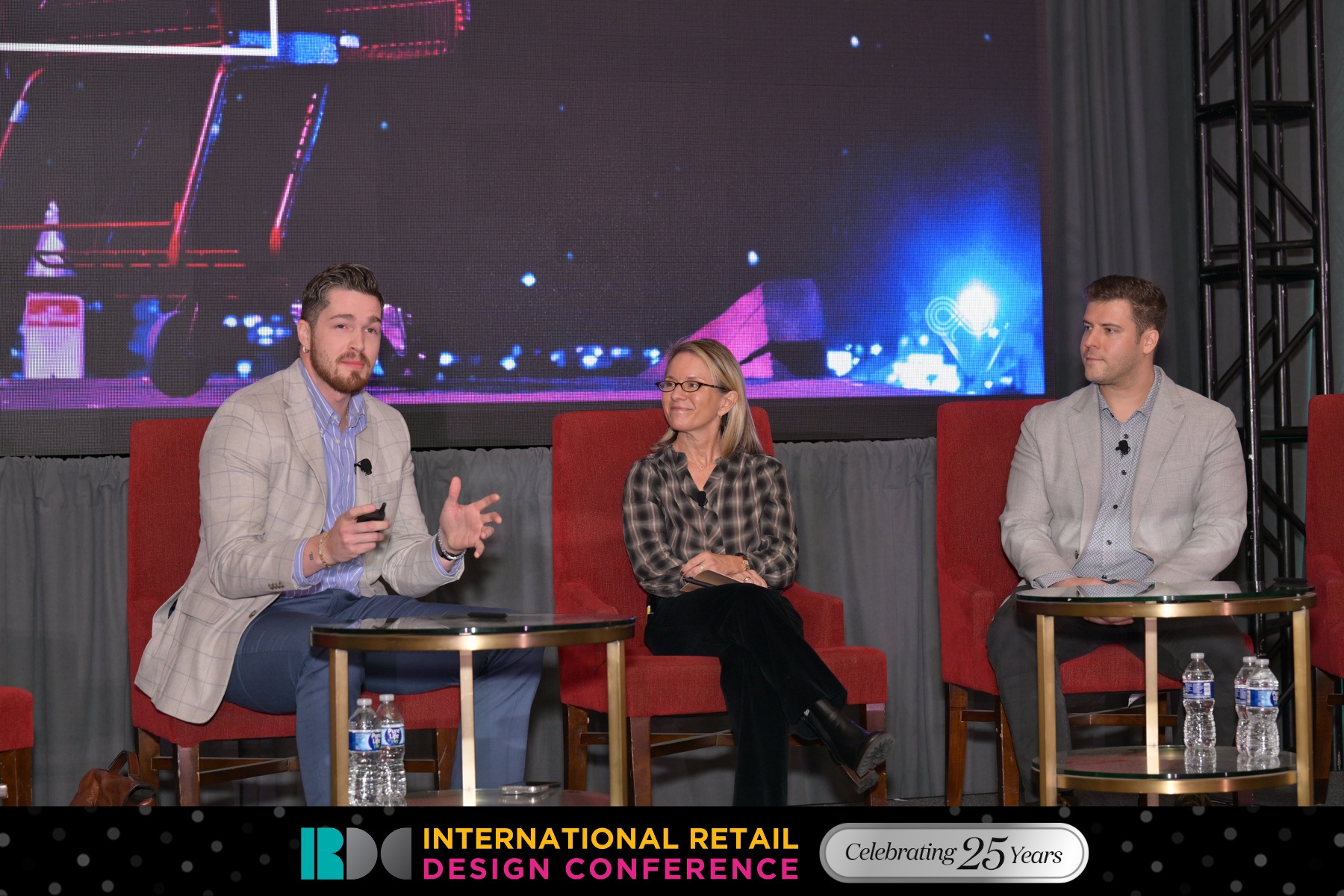The grocery shopping experience has changed significantly, transforming from a functional necessity into an experiential adventure. The grocery market is projected to hit $1.9 trillion in sales by 2023, driven in part by a new generation of digitally native consumers. Today’s grocery stores must serve as gathering places, stewards of the local community, and a place to be introduced to new tastes, recipes, and experiences.
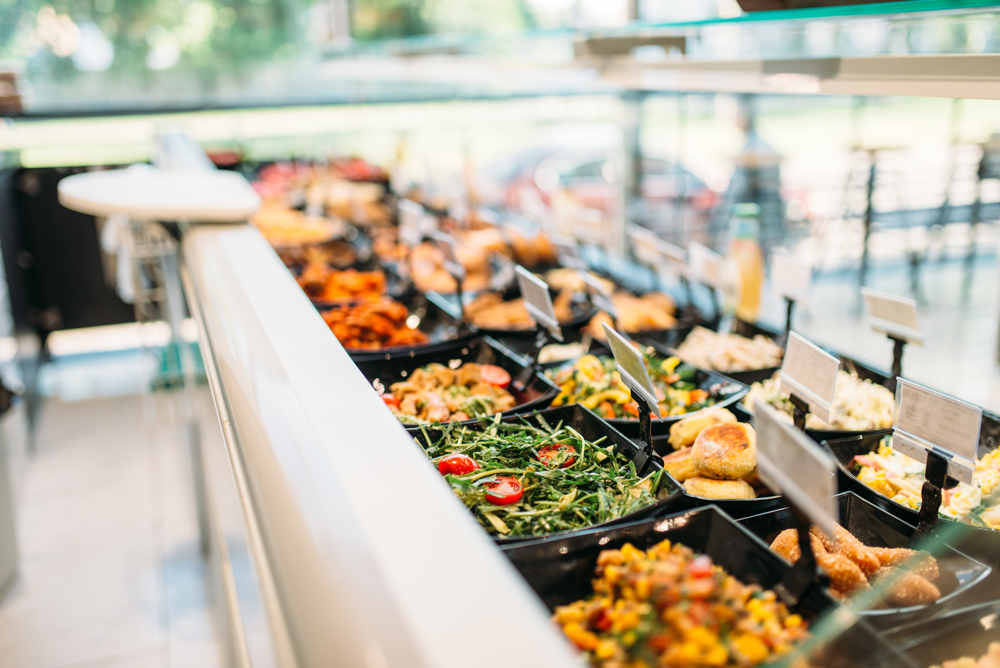
Grocery Stores as Innovators
The innovation grocery stores were forced to adopt—curbside pickup, delivery, self-checkout—may have started as ways for shoppers to stay safe, but they are now an expected standard. As consumer expectations around convenience and experience keep increasing, grocers are turning to tech. According to a survey by Doppio, 81% of grocery execs say they must upgrade their technology tools and regard “budget, integration, and talent” as their top three challenges for 2023.” As consumers expect more from their grocery experience, competition will grow fiercer. The stores that win will be the ones capable of delivering the best consumer experience.
We spoke to ASG-Chute Designer John Krivicich and Director of Graphics Production Steve Johnson for their insights about the future of grocery store design and how design thinking impacts the way they communicate with consumers through signs, imagery, and store layout.
“Shopping habits changed in 2020, and they never really reverted back.”
- John Krivicich, Designer at Chute Gerdeman

Remodels that Flex
These days, many grocers are investing in remodels, as opposed to the prototype of the past. Remodels flex much easier at scale as opposed to prototypes, and many companies, including our clients, develop one prototype into a remodel program.
Blake Morgan, a customer experience futurist, predicted in 2020 that the grocery store of the future would be much more experiential. New, more flexible store designs and remodels allow for quick updates and shifts to meet consumer needs and deliver the experiences that draw shoppers into the store.
“The grocery store of the future will be much more focused on experience than just things. Customers won’t choose the store because of the products; they’ll choose it because it offers a convenient or beneficial experience. It will be a place where customers come to learn about their food and experience it in new ways instead of just buying it. That means stores will offer things like cooking classes, wine tastings and restaurants.”
New, more flexible store designs allow for quick updates and shifts to meet consumer needs and deliver the kinds of experiences that draw shoppers into the store.
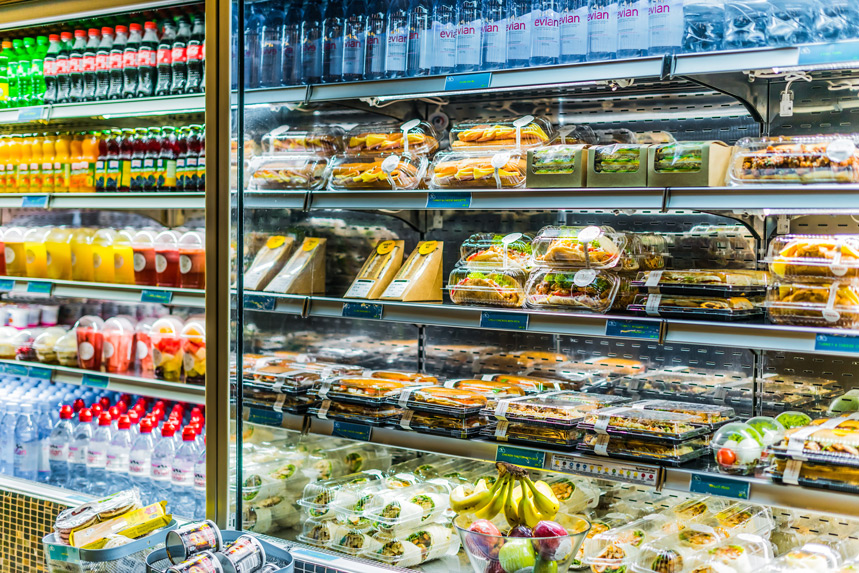
A New Approach to Layout
Walk into any grocery store in America, and you’re likely to land in the produce section first. But that’s starting to change as grocers appeal to consumer wants and needs. A key shift in design for grocery stores starts with convenience, as ready-to-eat meals and pre-made or heat-and-go meals are dominating the grocery world. According to Doppio, 67% of shoppers will maintain or increase their spending on prepared food in 2023. Look for these options to take up the prime real estate in the grocery stores of tomorrow.
Grocers also will be shaking up the traditional layout by setting up the store for micro-experiences. Some of the best experiences come from thoughtful moments within a store that champion a certain department, product, or seasonal selection. Look no further than the Italian marketplace chain Eataly as a prime example of a store successfully perpetuating these important moments. Grocers can enhance their experience by offering sampling events, taste tests, and tear-off recipe cards to engage shoppers and bring their carts to a stop.
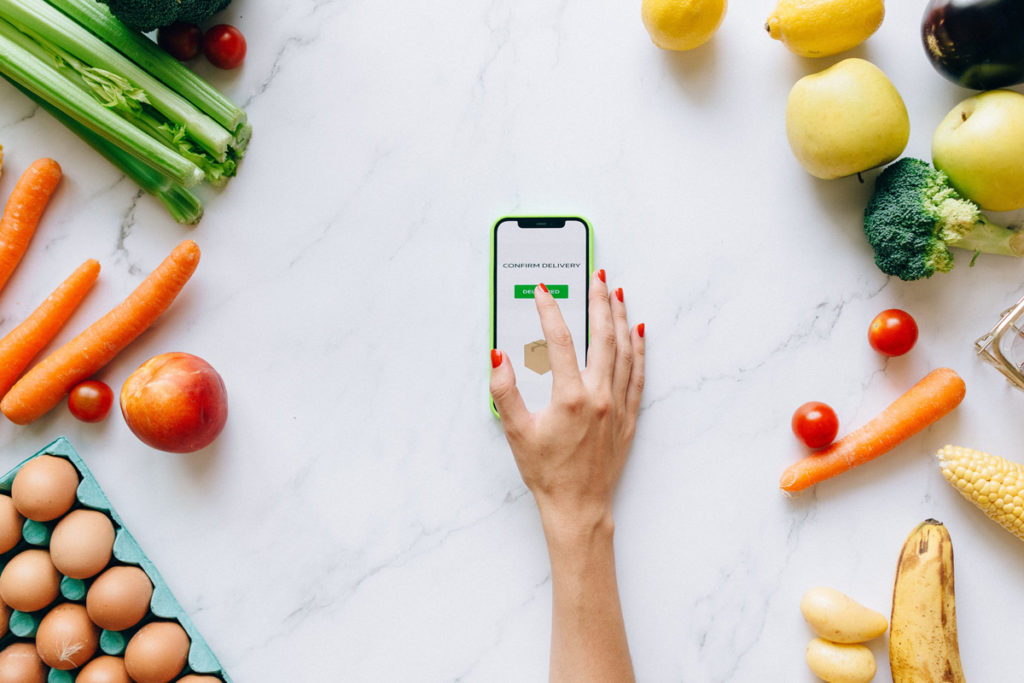
Automation Makes Communication Critical
According to Winsight Grocery Business, the number of AI-powered stores is expected to grow exponentially. In the article, John Fisher, CEO of Standard AI, explains that “in the next five years, we’ll see thousands of AI-powered stores across the world” that “will empower retailers to offer new checkout experiences to their entire base of shoppers that come through the door.”
AI is an important investment because self-checkout, mobile applications, and store mapping are the leading technologies that customers say they want more of. With 67% of consumers using their smartphones while they shop, investing in communication technology like texting, chatbots, and voice assistants can help guide consumers and provide product information while they are in the store. So the future of store communication will not only include traditional signage, but also better communication through apps and other technology.
Winsight’s data reports that many shoppers (76.7%) are interested in interactive displays that provide information on different brands. They want improvements in scan-and-go technology and want to be able to use it to scan and compare products. And 70% of shoppers want notifications about out-of-stock inventory with suggested alternatives.
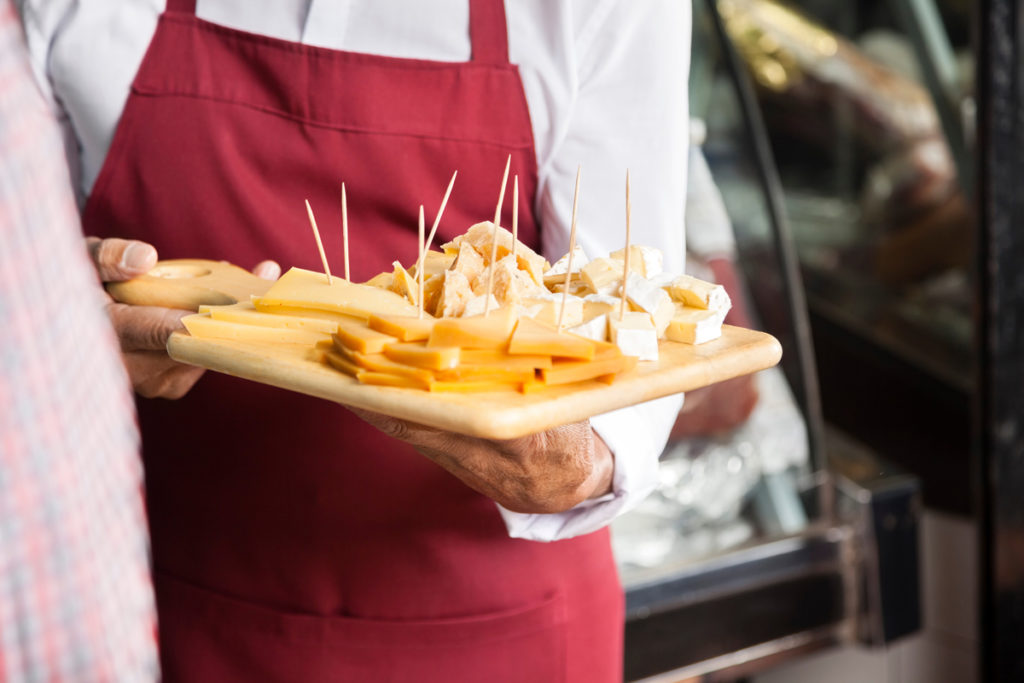
Dedicated to Educate
Education is crucial to the overall consumer experience, especially for items like wine, cheese, meat, and other fan favorites. Pairing tips, recipes, and other helping hands to enhance the hospitality of a grocery experience and signage can direct consumers to educational opportunities.
We know that signage matters. According to Shop Association, 76% of all purchase decisions are made in-store, and 68% of all in-store purchases are impulse driven.
“Imagery is mainly for in-store marketing, appetite appeal, and the art of enticing. This is why it’s important to be strategic about images, graphics, and signage at a high sightline.”
- Steve Johnson
Design is used to draw more people inside, and the payoff when they arrive should always be an intuitive and enjoyable experience. To ensure imagery and signage is effective for the consumer, you always need to ask what role the sign or graphic is playing. As brands like Target, Meijer, and others dive deeper into the grocery business, they have taken a new approach to developing wayfinding, graphics, and in-store communications that are brand-right. Design is also used to communicate values like affordability and quality. “Affordability is crucial for brands and shoppers alike. It’s important for us as designers to convey approachability and affordability in a way that highlights the integrity of the brand and empowers the shopper,” says Krivicich.
Everything needs to be ownable, from the colors of images to the signage to the navigation. Johnson says if it’s not on-brand, it isn’t serving its purpose. Graphics make sense when paired with the community. Think of local, private selections, regional selections, wayfinding (localized), and other journey assets. It’s all about connecting while helping people navigate at the same time.
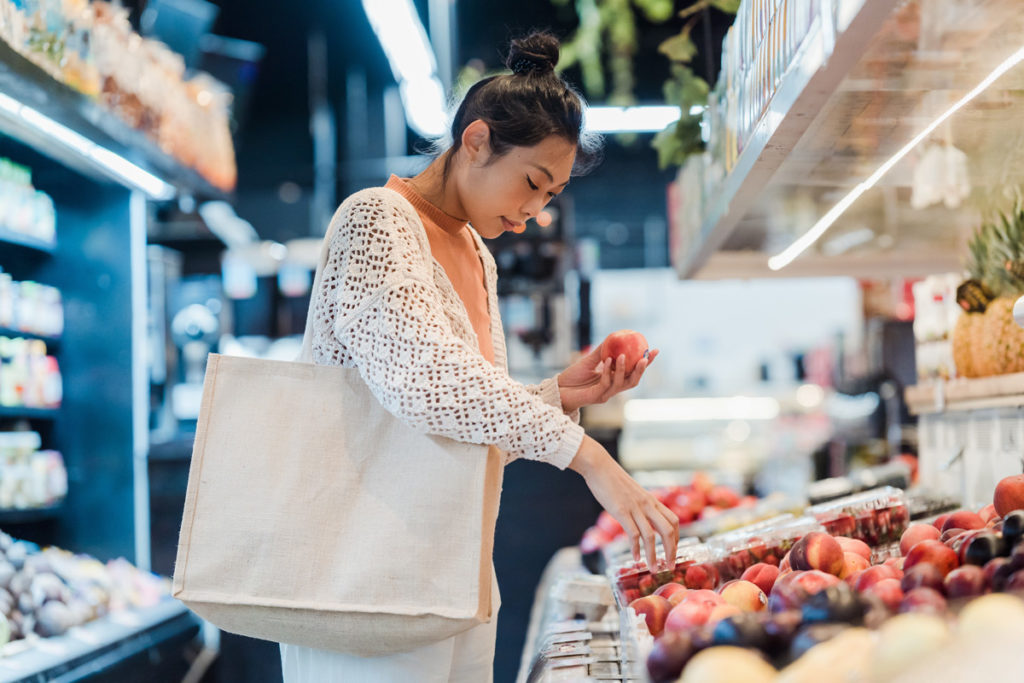
Grocery Stores Anchor Us
Since 2020, grocery stores have been a steady ship in a sea of uncharted waters, even as many other retailers failed to stay afloat. Both literally and figuratively, grocery stores became an anchor – the grocery store is an essential part of the consumer’s daily life. Not only did grocers remain open and accessible to customers when many retailers did not or could not, but they became the stores failing malls and shopping centers turned to when large department store anchors closed or went out of business.
People shop for food, regardless of what else shifts in their lives. Because grocery stores are so essential, the pandemic forced grocers to accelerate changes that might have otherwise taken years to accomplish. Now, they have the opportunity to continue leading retail into the future with innovative approaches to layout, design, communication, and experience.





